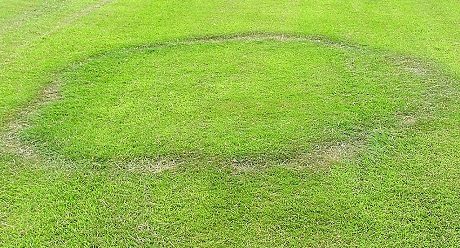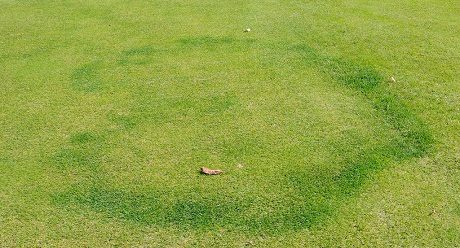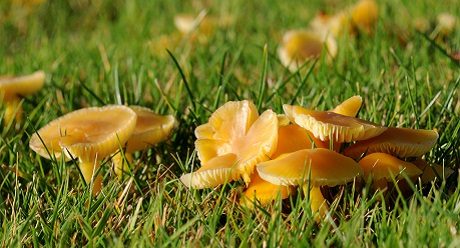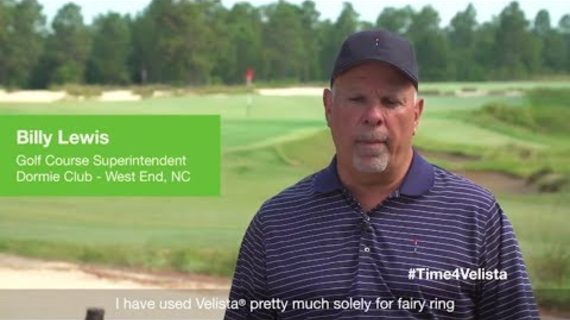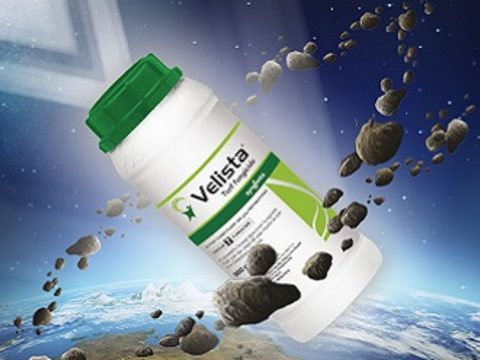Staying in the Zone is key to industry leading Fairy Ring solution
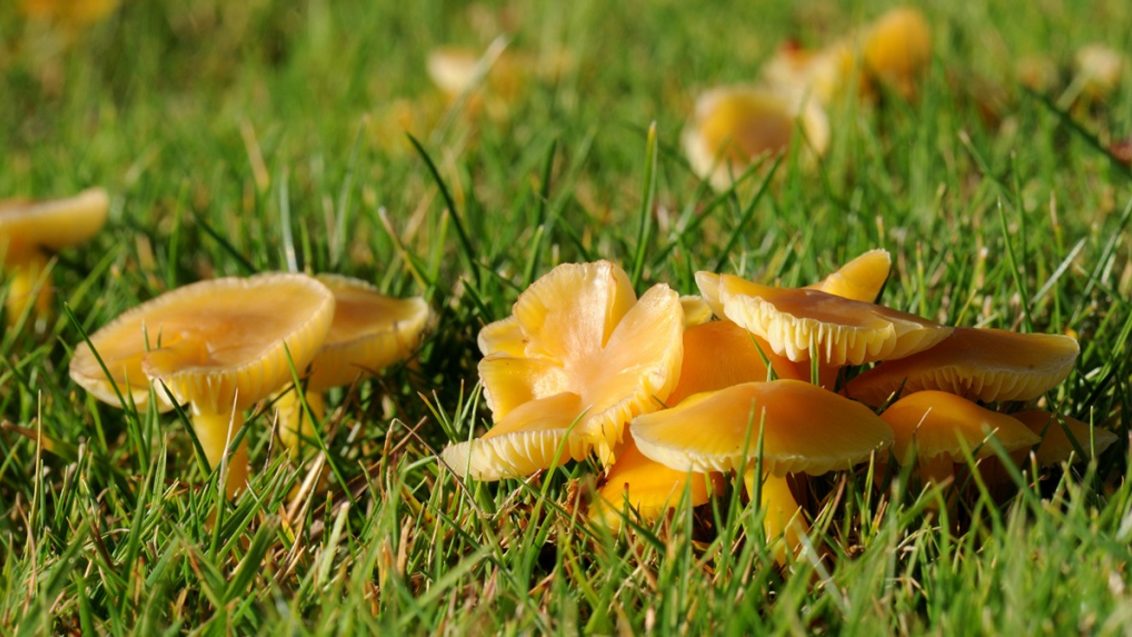
As we come into peak Fairy Ring season the control choices we make – especially how to treat and apply treatments – will dictate the level of control we can obtain for the months ahead. To achieve reliable Fairy Ring control, it’s important to first understand the pathogen as well as how to get the best outcome from the products used in a treatment program.
Fairy Ring is a complex pathogen with perhaps more than 60 pathogens causing Fairy Ring symptoms in turf. Your choice of solution needs to have been researched and developed under Australian conditions to ensure reliable control and have the capacity to provide broad-spectrum control.
Fairy Ring may be complex, but management is simple
Fairy Ring fungi grow on thatch and organic matter in the soil profile. Their growth changes the physical and/or chemical properties of the soil. This leads to changes in the appearance and/or health of the turfgrass.
Fairy Ring management can be approached from two angles:
Curative management:
- Bring the soil properties back to normal
- Prevent further growth of the Fairy Ring fungus
Preventative management:
- Prevent the Fairy Ring fungus from growing
- Maintain soil properties favorable for turf health
VELISTA has you covered when it comes to Fairy Ring; it is the go-to control option in Australia and USA for turf management. VELISTA has established itself as a robust and reliable control for this complicated and complex disease, with the power to deliver excellent preventative and curative control. VELISTA has been extensively trialed throughout the USA and Australia, and has now been applied to literally thousands of hectares of turf to control Fairy Ring. To hear from some of our customers check out the video at the bottom of this article.
NOTE: VELISTA enters the plant relatively quickly so you need to water it to the desired site within 1 hour and apply with a high water volume,approximately 100L water/ha, to move the product near the soil surface. Once washed in it will then stay there in the soil profile and persist for up to 28 days. It’s important to work out the depth of the fungal pathogen, as it can vary from 10 – 50 mm deep in turf. The depth will determine how far you need to water the product. It is recommended to use a wetting agent (non-ionic surfactant) to aid delivery into the soil profile.
Identify and treat the Fairy Ring zone for effective outcomes
The first step in effective Fairy Ring management is understanding where the pathogen is situated within the thatch/soil profile. This is the key to achieving best results with your VELISTA application. For example, if Fairy Ring is active in the upper soil/thatch, you may only require 3 mm to 4 mm of irrigation. Compared to if Fairy Ring is active 5 cm deep in the soil, this will require around 6 mm to 10 mm of irrigation to allow the fungicide to reach the site.
Identifying this key dynamic means you can place VELISTA directly within the Fairy Ring zone. To work out where the disease is situated, remove 1 or 2 plugs from the infected area and place in a zip lock bag. Seal shut and allow to sweat in the bag until it establishes mycelium and use this to identify location of the Fairy Ring zone.

Left: mycelium growing in the upper thatch indicates 3-4mm of irrigation with VELISTA application.
Right: mycelium growing deep in the soil indicates around 6-10mm of irrigation with VELISTA application.
VELISTA is a preventative and curative option which is not systemic and stays where you need it in the Fairy Ring zone. Unlike strobilurin Group 11 treatment options, it will not move up and out of the Fairy Ring zone. VELISTA works longer and harder, in place, to treat the pathogen. and can be used as a preventative or if required as a curative solution.
Wetting Agent choice is important
A wide range of wetting agents (non-ionic surfactants) exist on the Australian market. It is recommended when applying VELISTA, to use a penetrant-type wetting agent that can move the product through the soil to the correct depth or help move VELISTA through a tight canopy, even if hydrophobic conditions exist. Where hydrophobic conditions have established re-wetting the soil with wetting agent is a must for recovery and best levels of control. Areas under a wetting agent program before application will support good movement of product into the profile while maintain good soil conditions. If Fairy Ring affected areas are not under a program application of a wetting agent prior, application with a wetting agent will aid in priming the areas to be more receptive to application while restoring soil conditions, especially if hydrophobic conditions have already started to develop..
Three Fairy Ring types; one solution in VELISTA
There are several types of Fairy Ring symptom classification, a disease which can present in rings or arc shapes or irregular patterns. In most cases of this hard-to-control fungus, management is required. Edaphic Fairy Ring infects the soil thatch and exhibits three distinct symptoms, from type 1 to type 3. Whereas leptophilic Fairy Ring establishes in the turfgrass canopy and is also known as superficial Fairy Ring. These superficial symptoms are not devastating to turf, but they do detract from uniformity and can affect playability.
Type I |
Type II |
Type III |
| Symptoms: Damaged or dead turf from drought stress. They may have fruiting bodies present. | Symptoms: Rings of dark green or quickly growing turf. These symptoms usually occur early in the season and indicate that more severe Type I symptoms may follow. They are most evident in under-fertilised turf. They may have fruiting bodies as mushrooms or puff balls. | Symptoms: Mushrooms or other fruiting bodies produced in a ring with no visible effect on turf growth. They are most common during periods of wet weather preceded by drought. |
Causes: | Causes: | Causes: |
No matter the type, in most cases of this hard-to-control fungus, management is required. VELISTA has been researched and developed under Australian conditions to ensure you can achieve reliable preventative and curative control. Velista regularly delivers robust control of Fairy Ring in range of situations and on a disease that can form from a range of fungi species.
Extensive Australian Trials indicate VELISTA offers best in market control
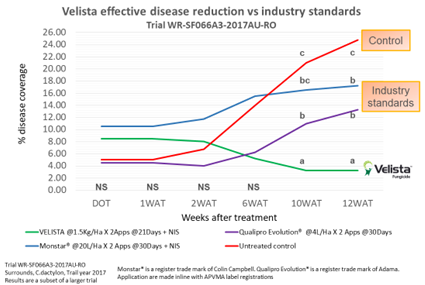
VELISTA is a leading Fairy Ring control in Australia
- Formulation stays where you place it and will not systemically move out of the Fairy Ring zone
- Demonstrated reliability under a range of situations in Australian trials vs other registered products
- Easy mixing rate
- Established as preventative and curative solution
To join the conversation on Twitter tag #Time4Velista and #FriskyFairyRingFriday and @SyngentaTurfANZ.
For more information contact your local Syngenta Agent or sales representative.

